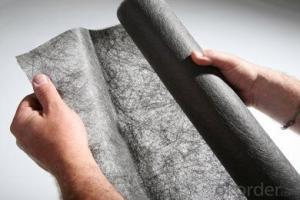Aquatic farming, also known as pisciculture, is an ancient practice that has been reformed by contemporary technology. One of these innovations is the use of ‘geomembrana para piscicultura’, a term many people might not be familiar with but it has revolutionized fish farming. This adaptable material has changed the way we breed and handle fish hence providing an effective and sustainable environment for both.
Growing up near the coast, I was accustomed to tides rising and falling. The waves had a rhythmic sound which provided background music in my childhood days whereas salty air was just like home taste. However, this understanding came to me when I decide to venture into aquatic farming where life is created beneath the waters.
The geomembrane is not simply a waterproof lining; it serves as a protective barrier that ensures the survival of our aquatic species under confinement. It’s weathered proof against intensely harsh conditions and creates a nurturing ground for fish production as well. Made from high-density polyethylene (HDPE) or other long-lasting materials, this geomembrane does not get punctured easily; moreover it can resist ultra violet sunrays together with chemical corrosion thus making it durable and dependable source of water solution for farmers.
One of the advantages offered by the use of geomembranes in aquaculture is they help creating adequate environment suitable for fish farming practices thus serving their purpose best in such areas where natural water bodies are limited or polluted. When ponds or tanks are lined with a geomembrane, farmers can maintain high quality water that are free from contaminants or toxins within them Therefore, fish tend to grow faster hence increasing yield while at the same time improving healthiness.
In addition, due to its impermeability property, fishes will not escape neither will water leak through; hence perfect solution for recirculating aquaculture systems (RAS). These systems use less water because they recycle it instead of having fresh water all the time, leading to a decrease in environmental footprints of fish farming. This function of the geomembrane in RAS is crucial since it ensures that the water does not have any pollutants which can be detrimental to fish.
Another interesting thing about ‘geomembrana para piscicultura’ is that it’s highly adaptive. Whether you are a small-scale farmer with some ponds or a large production outfit having many tanks, you can find an appropriate geomembrane for you. It is so flexible ensuring easy fitting and customization to suit various forms of aquaculture setups.
The installation process for a geomembrane is quite simple. It involves digging up the area, preparing the subgrade and then gently spreading out the membrane on top. The seams must be particularly well sealed so as to maintain its waterproofness and integrity therefore this procedure needs precision as well as skill but eventually leads to a very strong system that lasts long in use.
In terms of maintenance, a geomembrane is relatively low-maintenance. Other than regular examination for signs of wear and tear there are no other special requirements needed. This is important because they also face routine challenges associated with managing their earthly stocks every day; hence minimal attention required.
Nevertheless, like any other innovation, using ‘geomembrana para piscicultura’ does have its own set of problems. Among them is the initial cost as high-quality geomembrane can be expensive. There is also the necessity for skilled labor in installing and maintaining the geomembrane adding to the total costs.
However, it is evident that the advantages of a geomembrane in fish farming surpass its disadvantages. Better water quality together with increased fish yields and lessened environment pollution are some of its merits. It can be considered to be an investment worth getting into both small as well as large scale farmers.
In conclusion, the ‘geomembrana para piscicultura’ demonstrates human wisdom and our capacity to invent and adapt to present-day agriculture necessities. Therefore, development has made it possible for fish farmers to practice controlled and sustainable methods thereby opening up potential fisheries for varieties of species. I am looking forward to seeing what kind of steps will be taken in this sector as new forms of pisciculture are developed through technological advancements taking place within this field.

